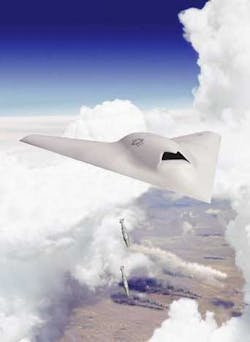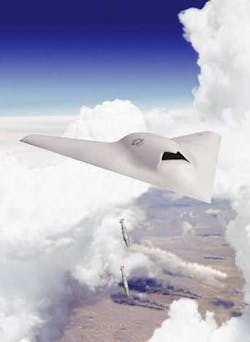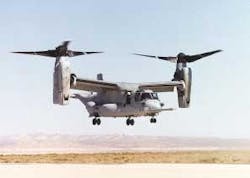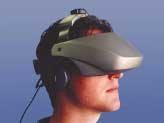Boeing uses Green Hills software for unmanned combat air system
Engineers at Boeing Integrated Defense Systems in St. Louis needed a real-time operating system for the X-45C Joint Unmanned Combat Air System (J-UCAS). They found a solution with Integrity-178B from Green Hills Software in Santa Barbara, Calif.
Designers will use the Integrity RTOS in the aircraft's Vehicle Management System (VMS), and they will develop the embedded software application with Green Hills' AdaMULTI integrated development environment tools.
The J-UCAS X-45 program is a Defense Advanced Research Projects Agency (DARPA)/U.S. Air Force/U.S. Navy/Boeing effort to demonstrate the technical feasibility, military utility, and operational value of a networked system of unmanned air vehicles for the Air Force and the Navy.
Operational missions for the services may include suppression of enemy air defenses; deep strike; electronic attack; and intelligence, surveillance, and reconnaissance. The aircraft autonomously performs all attack maneuvers, bay-door operations, and weapon-away release sequences under human operator supervision.
For more information, see www.ghs.com.
Lockheed Martin picks Curtiss-Wright to integrate radar components
Planners at Lockheed Martin needed help building radar warning receiver (RWR) systems for U.S. Army helicopters. They found an answer with Curtiss-Wright Controls Embedded Computing in Littleton, Mass.
Curtiss-Wright engineers will integrate, manufacture, and test all elements of the RWR subsystems, under the terms of a $6 million contract from Lockheed Martin's Communications Electronics Command (CECOM) Rapid Response (CR2) office in Tinton Falls, N.J.
The RWR is a safety system that monitors the environment for radar signals, characterizes them, and warns aircraft crews when they need to take evasive maneuvers or deploy countermeasures.
"We are excited to assist Lockheed Martin and our armed services with this specialized system, which will help protect our military's aircraft and crews going into harm's way around the world," says George J. Yohrling, president of Curtiss-Wright Controls Inc. "Curtiss-Wright Controls is proud to support this vital program and appreciates the confidence Lockheed Martin has placed in us as the scope of this avionics project increases."
Delivery of the RWR systems will start in 2005 and finish by 2007. For more information, see www.cwcembedded.com.
Boeing picks Thales for 7E7 cockpit displays
Planners at the Boeing Co. in St. Louis needed flight-control displays for the future 7E7 Dreamliner passenger jet. They found an answer at Thales of France. Thales engineers will supply the Integrated Standby Flight Display (ISFD) for the 7E7.
The ISFD is a liquid-crystal display (LCD) located in the center section of the forward flight-deck panel. It provides an integrated display of airspeed, altitude, and airplane pitch and roll attitude. In addition, the ISFD demonstrates heading and landing-approach deviation data in a format similar to primary flight displays.
"Thales's Integrated Standby Flight Display is in service today on our 737NG, 747-400, 757, 767, and 777 fleets. The selection of Thales for this key function expands the partnership we have already developed on the 7E7," says Mike Bair, Boeing's senior vice president — 7E7 Program. Last month, Boeing tapped Thales to supply the electrical power-conversion system for the airplane.
Launched in April, the 7E7 Dreamliner is a family of three airplanes, all of which use the same engine type. The 7E7-8 will carry 217 passengers with a range of up to 8,500 nautical miles. The 7E7-3 is optimized for shorter flights, carrying 289 passengers on ranges up to 3,500 nautical miles. And the 7E7-9 will carry 257 passengers with a range of 8,300 nautical miles. For more information, see www.thalesgroup.com.
Navy picks unmanned mine detector from Lockheed Martin
U.S. Navy designers needed an anti-mine system for the newest Arleigh Burke–class guided-missile destroyer, USS Momsen (DDG 92).
They found a solution in the Remote Minehunting System (RMS) from Lockheed Martin in Bethesda, Md. The RMS is an unmanned, remotely operated vehicle that performs organic mine reconnaissance.
Powered by a long-endurance diesel engine, the semisubmersible RMS is integrated with the ship's AN/SQQ-89 (V) 15 Undersea Warfare System. The RMS uses a variable depth sensor and transmits information to the ship using real-time data links. Navy leaders plan to begin shipboard testing in early September, and to eventually install the RMS on six Navy guided missile destroyers and on the Navy's new Littoral Combat Ship.
Each of the Lockheed Martin systems integrated on Momsen use open-architecture software, including the 75th Aegis Weapon System, the SPY-1 radar, the SQQ 89 (V) 15 Undersea Warfare System, the MK 41 Vertical Launching System, and the RMS.
"It is fitting that the first RMS unit has been installed on a ship named for
Adm. Swede Momsen," says Jim Weitzel, Lockheed Martin vice president of Ocean Systems.
"Adm. Momsen was a man well-known for his inventiveness and dedication to service, traits reflected in the Remote Minehunting System. Through its creative approach to mine reconnaissance, RMS will allow the Momsen and her crew to carry out their mission with a much higher degree of confidence that mine threats will be detected and avoided. We are proud to provide this unprecedented capability to this ship and her crew."
For more information, see www.lockheedmartin.com.
German designers pick Mercury Computer for military radar
Designers at the Research Establishment for Applied Science (FGAN) of Wachtberg, Germany, needed a multicomputer for a military radar. They found a solution at Mercury Computer Systems, of Chelmsford, Mass.
FGAN engineers will use Mercury's RACE++ multicomputer in the development and implementation of their Stand-Off Surveillance and Target Acquisition Radar (SOSTAR-X) system.
SOSTAR-X is a European radar development including a two-dimensional active electronically scanned array (AESA) antenna, operations and control, data link, and ground station. The SOSTAR system comprises a comprehensive ground surveillance and target identification (GSTI), swath and spotlight synthetic aperture radar (SAR), classification and data exploitation technologies.
In the SOSTAR-X project, FGAN is building and installing the classification modes inverse synthetic aperture radar (ISAR) and high range resolution (HRR) length measurement.
"FGAN selected Mercury as a supplier because the RACE++ technology possesses a unique scalability that enables performance values to be calculated based on experimental system results. Moreover, besides the hardware, most algorithms can be reused unchanged in a project upgrade," says Dr. L. Roessing, SOSTAR-X project manager at FGAN.
"Years of cooperation between FGAN and Mercury have shown that Mercury is a reliable partner with excellent customer support based on its strong experience in the field of radar processing and its capability to provide optimized functions for customer-specific applications," he says.
For information, see www.mc.com.
Navy picks Northrop Grumman for submarine navigation
U.S. Navy leaders needed better submarine navigation systems than they have today. They found a solution with the Sperry Marine business unit of Northrop Grumman's Electronic Systems sector in Charlottesville, Va.
Planners at Naval Sea Systems Command in Washington awarded a contract to supply navigation radar sets and associated systems engineering for 10 submarines.
Engineers at Sperry Marine will deliver AN/BPS-16 (V) 4 navigation radar sets for six Virginia-class attack submarines and four guided-missile submarines.
They will develop automatic radar-plotting aid software for the Virginia-class submarines and upgrade the Voyage Management System, which provides integrated navigation capability and complies with the Chief of Naval Operations directive that all Navy vessels must convert to electronic charts.
Deliveries will begin in late 2005 and continue through 2010 if all options are exercised. The contract is valued at $13.3 million for the base year and a total of $11.4 million for four option years. For more information, see www.sperry-marine.com.
Boeing chooses Honeywell for cockpit displays in V-22
Planners at the Boeing Co. in St. Louis needed cockpit displays for the CV-22 Osprey tilt-rotor military aircraft.
They found a solution with Honeywell in Phoenix. Honeywell engineers will provide the Traffic Collision Avoidance System (TCAS) and cockpit displays for 50 CV-22 Ospreys.
This is the first TCAS on the CV-22, a tiltrotor vertical short takeoff and landing aircraft being developed for the U.S. Air Force. Variations of the aircraft are being developed for other services.
TCAS provides the pilot with a visual display and audio warning when other aircraft come into proximity. TCAS systems are standard equipment on most commercial aircraft that carry passengers and operate in high-density traffic. Production of the TCAS and displays will take place at Redmond, Wash., and Albuquerque, N.M.
For more information, see www.honeywell.com.
Fifth Dimension will use eMagin displays for training
Engineers at Fifth Dimension Technologies (5DT) of Irvine, Calif., needed a display for their virtual-reality training systems for military jet fighter pilots.
They found a solution with active-matrix OLED-on-silicon displays from eMagin Corp. in East Fishkill, N.Y. OLED is short for organic light-emitting diode.
Designers at 5DT build head-mounted displays, virtual binoculars, virtual laser range finders, and virtual night-vision goggles. To create a convincing immersive experience, they need displays with smooth tracking, bright color, and flicker-free imaging. They will use the eMagin components in five new applications:
- the head-mounted display 800-40 will use two eMagin SVGA 3-D displays with head-tracking ability and a 40-degree field of view for simulation and visualization;
- the virtual binoculars 800-45 custom is used for ship bridge simulator, air traffic control simulators, and observer post training;
- the virtual laser range finder 800-45 will train troops to use range finders in combat;
- the virtual night-vision goggles 800-45 will train pilots how to fly with goggles; and
- the virtual monocular display 800-45 will train users to perform maintenance and field support with hands-free operation.
For information, see www.5dt.com.
Lockheed Martin uses KineticSystems for missile tests
Test engineers at the Lockheed Martin Corp. Maritime Sensors and Systems division in Baltimore needed to upgrade the antiquated magnetic-tape data-acquisition system used to test their MK41 missile-launching systems. They chose a VXI-based system from KineticSystems in Lockport, Ill.
The MK41 Vertical Launch System comes in three sizes — from strike length, at nearly 30 feet tall, to tactical length and the self-defense launcher. The MK41 VLS is now deployed at sea in 13 configurations, ranging from a single module with 8 cells to 16 modules with 128 cells. The full-size tube can fire nearly any missile, including the SM2, Vertical Launch ASROC, Tomahawk, RIM-7 Sea Sparrow, and Evolved Sea Sparrow.
This flexibility demands extensive testing, performed by Lockheed Martin engineers at their Systems Integration Lab for Launching Systems in Baltimore and at the firing range in White Sands, N.M. Engineers use KineticSystems VXI hardware and software to conduct environmental testing at the White Sands missile launches, and record the results.
"We have patch panels in the launcher that route all of the temperature, strain, and accelerometer data back into another building, where we have it hard-wired right to a KineticSystems rack," said Mike Geesey, a staff engineer with Lockheed Martin.
VXI (VME eXtensions for Instrumentation) is an open standard that defines shielded modular instruments, rugged chassis EMI (electromagnetic interference) protection, and tight power supply noise specifications, and uses the 32-bit VMEbus for primary backplane communication.
For more information, see www.kscorp.com.
Airline chooses FlightVu for cockpit-door monitoring
Leaders at Britannia Nordic, a charter flight operator from Norway and Sweden, needed a sensor system for cockpit-door security. They found a solution with AD Aerospace of Manchester, England, and Aircraft Engineering & Installation Services Inc. (AEI) of Orlando, Fla.
Engineers from both companies will adopt the FlightVu Cockpit Door Monitoring Systems (CDMS) to fit Britannia's fleet of six Boeing 737-800s. Workers from AD Aerospace will provide the video security system, while AEI designs the installation.
The FlightVu CDMS system enables the flight crew to monitor the area outside the flight deck door and adjacent galleys from their seats. The pilots can visually identify anyone requesting entry.
"Britannia Nordic always puts the safety and security of our passengers first. We understand that the flight is the start of their holiday and we want it to go as smoothly as possible," says Heino Ramstedt, of Britannia Nordic. "We believe that FlightVu CDMS will enhance the systems and procedures we currently operate."
The FlightVu CDMS consists of three closed-circuit television (CCTV) cameras linked to an LCD monitor in the cockpit pedestal. The system provides the flight deck crew with clear, forward viewing, real-time video of the area outside the cockpit door.
The CCTV cameras are flush-mounted, in low-profile color coordinated housings, to the aircraft interior. Infrared Illuminators are included so the cameras will work while the cabin lights are extinguished.
For more information, see www.ad-aero.com or www.aei.aero.






